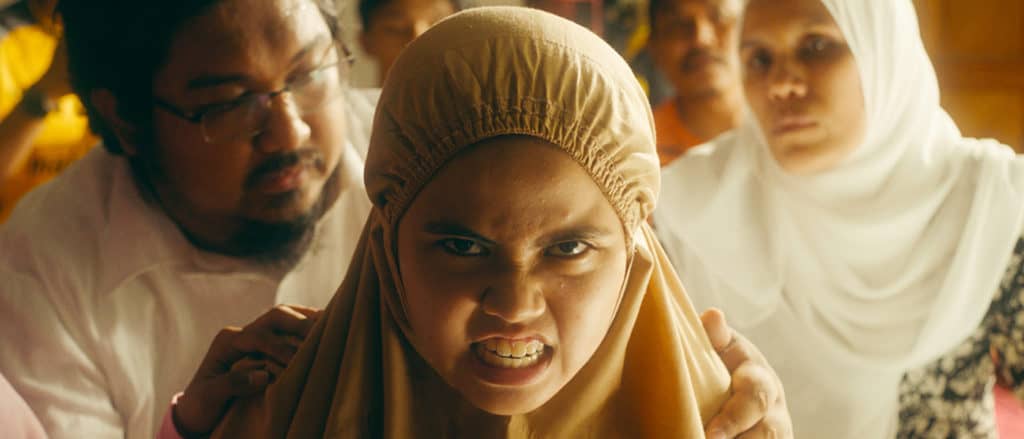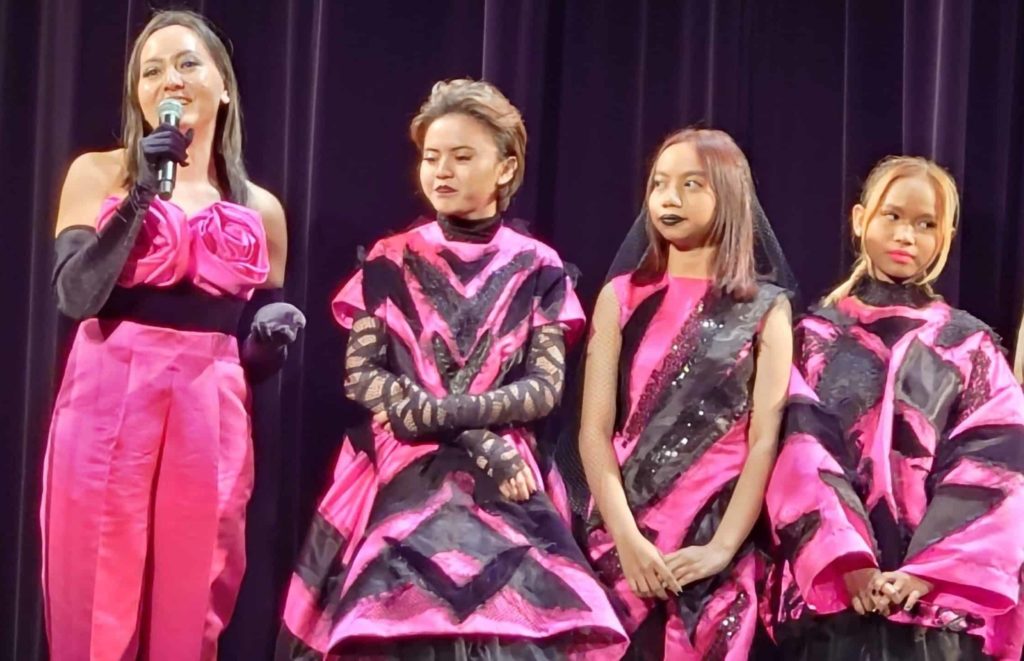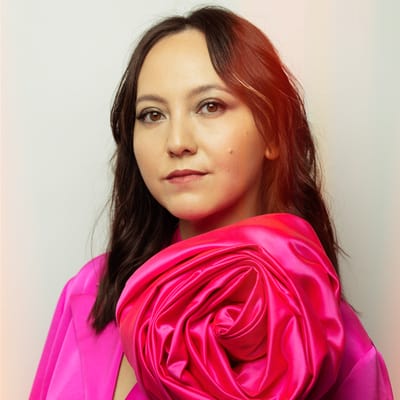Tiger Stripes was one of the most pleasant surprises at this year’s Cannes Festival, where it won the Grand Prix in the Semaine de la Critique section. I reviewed the film but was also lucky enough to talk to Amanda Nell Eu about her film—first, a little bit about herself.
Amanda Nell Eu: I was born in Malaysia. I grew up there, but when I was 11, I moved to the UK. So then I was studying there, and I went to Central Saint Martins, where I did graphic design, and everything I did was on camera and animation, and it had everything to do with films. Right after that, I did my Master’s in Filmmaking at London Film School. But having grown up in the UK, I suddenly felt like I didn’t know who I was as an Asian living over there.
I moved back to Malaysia. I decided to make some short films there. And that’s where I am today, from the two short films to Tiger Stripes; all the films are within the same obsession with the female body, genre, and folktales from Malaysia.
So, how did this project start, then? Can you tell me more about the genesis and the ideas behind it?
As I was saying, from my previous shorts, I started getting very obsessed with the themes of the female body, dealing with genre elements and having a bit of fun with it as well. I was thinking about the idea of puberty, and, of course, there are many comparisons between puberty and body horror. Even from my own experience, It was quite traumatic. Then I started working on this film and thinking about what it’s like to be a teenage girl and how we’re labelled emotional or hysterical and sometimes monsters. I thought, “Let’s have fun; I’m going to show you what a real monster is with a young girl.”

You mentioned the body horror genre. Is that something that you’re influenced by? Something you like in general?
I really love body horror because when I write or create, or even make decisions on set, I really like to use my feelings, like it’s a gut feeling. It’s an instinct or an impulse. And even when writing a script, I try to listen to my body more than overthinking things. Even on the set, I make decisions very quickly.
So you might even make a script change on set?
Yeah, If it’s needed to, if it doesn’t feel right on that day. When you’re shooting, everything’s going to change, and everything goes crazy and chaotic. So it’s always really fun to, like, be on your toes, be very flexible and, you know, have the ability to…
…adapt to the environment?
Yeah, especially in the jungle.
Do you have any certain influences, any directors you like, any films you think about?
Specifically for Tiger Stripes, I was definitely looking at, in terms of aesthetic choices, the Japanese horror comedy from the 70s called Hausu.1Known in English as House, directed by Nobuhiko Ôbayashi (1977). And then also I wanted to pay homage to a lot of the 1950s and 60s B-movie horror films from the Shaw Brothers in Malaysia. The film’s themes are very much coming from my personal experiences and when I was working with the girls and talking to all the girls in the film.
What was that like, working with girls that were that young?
It was amazing. I loved the entire process and did a lot of acting workshops, and within those workshops, we talked about sex education, body positivity, and bullying as well. So, it became a very kind of open space and a safe space where we would share a lot with each other, and I felt that that actually built a lot of trust in the group.
We have seen many of these films about girls growing up, including body horror, but this one feels different. Did you have a specific approach to avoid the clichés? The film has been compared to Ducournau and Weerasetakhul, but I think you managed to infuse the film with your own sense of mystery.
Already during the development, I heard those comparisons. They are great and Palme d’or winners, but when I’m working on the film, I tend not to think about comparisons or films made before because, I mean, almost every story has been told. My way of dealing with it comes from me, from my honesty, and again, it comes from my body,

The Cinematic World of Amanda Nell Eu
So from a cinematic point of view, how did you approach the cinematography, and what were you aiming for?
As I said, the aesthetic choices were very much like Hausu, especially in terms of the colours. Me and my DOP, Jimmy Gimferrer, were watching that film together, and we really love this kind of fake, hyper-realistic setting. We wanted to kind of create that in the jungle. Even though we were shooting in a real jungle, the lighting almost made the jungle look not real.
It has an otherworldly feel to it.
I wanted to have this fairy tale kind of feeling. For the camera work, working with the girls, seeing their chemistry, and Jimmy also coming to see some rehearsals, we could see all their energy being such a driving force that we both decided that the camera would always be at their level with them, very, very close.
…and also very low.
Very, very low, and you almost want to be next to her, but then when we came to things like the school or the adults, it was always to have this distance there.
You feel like it’s a “wild” aspect, and then there’s a formal aspect.
Yeah, so it’s that kind of contrast with her life as well, and always to see it from the girls’ point of view, where teachers are like caricatures and not real human beings at another level.
But they’re still not too much of caricatures. They don’t become simple villains. They retain their humanity.
I know what you mean, but we still emphasize the way the kids look at them, and you make fun of them, and they have little comedy quirks, which I wanted to bring out as well.
The interaction between the girls is also quite interesting.
I met Zafreen, who plays Zaffan, when she was 13. Then we had to delay the shoot for two years, and I could see this maturity with a teenage girl fire inside her. Another interesting character was Deena, who plays Farah, the mean girl. Because you always expect like a, “Oh, I’m such a bitch”, like typical. But I really loved how she had this kind of very introverted, like silent and still way about it, which is not typical.
Did you work specifically with the dynamic between Zaffan and Farah?
Yes, we did work on that because I wanted to convey this idea of female friendship, which is, to me, very complicated because you can love your best friend so much, but you can equally hate her with jealousy and all these weird emotions.
There is some very strong language in the beginning.
Yeah, yeah, yeah. It’s so strange because you’re like, yeah, you’re my best friend, but I hate you, and I will stab you when I have the chance. And I had those experiences as well. And I was speaking to the girls and their experiences with friendships. But what’s really great on set was that Zafrin and Deena became really, really close. So I loved that they had such huge support for each other off-set and also on-set when they were playing and acting.
I was thinking about the colours. In a way, that comes with the cinematography, but you already mentioned Hausu as an influence…
…. and also, of course, like in Malaysia, it’s just so colourful. It is a reality.
I was there once, for a month. It was a long time ago, in 1999, but in Cameron Highlands, Kuala Lumpur and other places.
It’s a bit different now but incredibly colourful, and I just wanted to push that.
So, what are your hopes for this film? Who do you think this is for? Who will be able to see it in Malaysia, for instance?
That’s not for me to say, but I do hope that it’s maybe a 15-plus or 16-plus audience. That would be great if that was possible.

